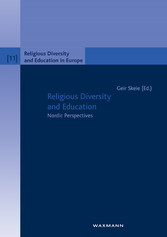Suchen und Finden
Service
Religious Diversity and Education. Nordic Perspectives
In the last ten years or so, religious plurality has become higher on the agenda for religious education research in the Nordic countries. This attention to religious plurality partly reflects processes of globalisation that include both physical migration and communication of ideas and is-sues across the world, making it ‘smaller’. It also reflects the preoccupation of governments with social cohesion and, as part of this, intercultural education. In the curricula of the Nordic countries this is manifested in different ways, setting also the agenda for parts of educational research.
This book addresses issues related to the increasing religious plurality in the Nordic countries. These issues are a challenge to many religious groups including historically dominant Lutheran national churches, both nationally and locally. They have also led to a reorientation in religious education research in the last decade. A rich variety of research perspectives are presented under three headings: Theoretical and methodical perspectives, The world of the students, Teachers and textbooks. Nordic religious education research here proves to be internationally oriented in terms of theoretical perspectives, whilst also contributing to the debate through important empirical studies. Examples of issues covered in the book are unintended learning, dialogue, gender, life-interpretation, spirituality, identity and values. In different ways all the contributions in this book shed light on the common theme of diversity, and are based on a will to include diverse perspectives both on the actors and the material of the classroom as well as on the life world of young people. The researchers represent different generations and different theoretical and methodological perspectives.
Alle Preise verstehen sich inklusive der gesetzlichen MwSt.










